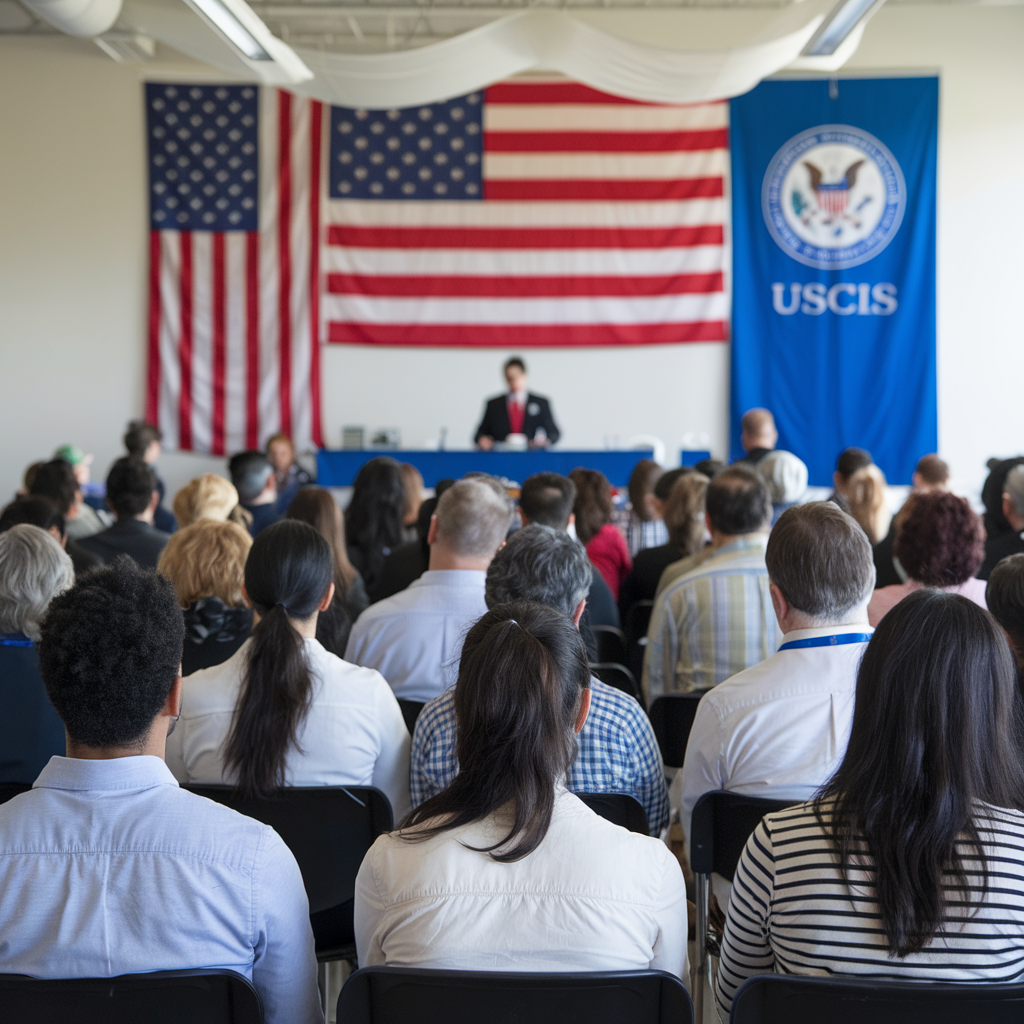U.S. Citizenship and Immigration Services (USCIS): Navigating the Complex Journey to Becoming a U.S. Citizen
The United States Citizenship and Immigration Services (USCIS) plays a vital role in the lives of millions who aspire to make the United States their permanent home.
If you’ve ever heard the phrase “the American Dream,” USCIS is often the gateway to making that dream a reality.
The agency is responsible for overseeing legal immigration into the United States, and its scope is both broad and complex. Whether you’re applying for a green card, seeking asylum, or aiming for U.S. citizenship, understanding how USCIS works can be a bit overwhelming.
But don’t worry! In this article, I’ll walk you through the ins and outs of USCIS, break down its key functions, and provide tips for navigating the system. So grab a cup of coffee, take a deep breath, and let’s dive into the world of U.S. immigration.

What Is USCIS and What Does It Do?
USCIS is a branch of the Department of Homeland Security (DHS). Established in 2003, USCIS was formed as part of a larger reorganization of immigration services in the wake of 9/11, taking over many of the responsibilities formerly handled by the Immigration and Naturalization Service (INS).
While its main purpose is to administer the nation’s legal immigration system, USCIS also plays a crucial role in enforcing immigration laws and enhancing national security.
Key Functions of USCIS
- Processing Immigration Applications
This is probably the function most people associate with USCIS. Whether you’re applying for a visa, a green card, or U.S. citizenship, USCIS is the agency that handles your paperwork. But they do more than just shuffle forms around. USCIS officers conduct interviews, background checks, and evaluations to ensure that every applicant meets the eligibility criteria. - Naturalization
Naturalization is the process through which a foreign citizen or national becomes a U.S. citizen. USCIS oversees this process, which involves everything from eligibility determination to the final citizenship test and oath ceremony. Becoming a U.S. citizen is often the culmination of years of waiting, paperwork, and personal dedication. - Asylum and Refugee Services
People fleeing persecution or danger in their home countries often seek asylum or refugee status in the United States. USCIS handles these requests, determining whether applicants meet the legal criteria for protection. This process can be life-changing for individuals who have nowhere else to turn. - Employment Authorization
Many immigrants come to the United States for work, and USCIS plays a key role in ensuring they are authorized to do so. The agency handles applications for work permits, known as Employment Authorization Documents (EADs), for non-citizens who want to work legally in the U.S. - Deferred Action for Childhood Arrivals (DACA)
USCIS also manages the DACA program, which provides temporary protection from deportation and work authorization to eligible young people who were brought to the U.S. as children. Though DACA doesn’t grant citizenship or permanent legal status, it offers a critical lifeline for many young immigrants.
USCIS by the Numbers
To give you a better sense of just how busy USCIS is, here are some interesting stats from the agency’s recent activities:
| USCIS Services | Number of Cases Handled (2022) |
|---|---|
| Citizenship Applications Processed | 900,000+ |
| Green Card Applications Processed | 1.1 million+ |
| DACA Renewals and Applications | 472,000+ |
| Refugee and Asylum Applications | 150,000+ |
| Employment Authorization Documents | 2 million+ |
The numbers speak for themselves. USCIS processes millions of applications every year, making it one of the busiest agencies in the federal government.
Understanding the Citizenship Process
One of the most common reasons people interact with USCIS is to become a U.S. citizen. But what exactly does the path to citizenship look like?
Eligibility for Citizenship
Before you even begin the citizenship process, you need to meet specific eligibility requirements. Generally, you must:
- Be at least 18 years old.
- Have been a lawful permanent resident (green card holder) for at least 5 years (3 years if you’re married to a U.S. citizen).
- Demonstrate continuous residence and physical presence in the U.S.
- Have good moral character (no serious criminal convictions).
- Pass an English language and U.S. civics test.
- Be willing to take the Oath of Allegiance.
If you meet these requirements, congratulations! You’re eligible to apply for naturalization.
The Steps to Becoming a U.S. Citizen
- File Form N-400
The first step in the process is submitting Form N-400, the Application for Naturalization. This form is the official request to start the naturalization process and includes a fee (currently $725, which covers the application fee and biometric services fee). Make sure you have all your supporting documents ready, like your green card and tax returns, to avoid delays. - Biometrics Appointment
Once your application is submitted, USCIS will schedule a biometrics appointment. At this appointment, they’ll take your fingerprints, photograph, and signature. These are used for background checks, so don’t worry if it feels a little like being at the DMV. - Interview and Citizenship Test
After your biometrics, the next major step is the naturalization interview. During the interview, a USCIS officer will ask you questions about your application and background. You’ll also be given a civics test, which covers U.S. history and government, as well as an English test (unless you qualify for an exemption). Study up on George Washington and the Constitution—this is your chance to show off your knowledge! - Decision
After the interview and tests, USCIS will make a decision on your application. If everything checks out, you’ll receive a notice for your naturalization ceremony. If not, USCIS will send you a letter explaining why your application was denied or delayed. - Oath of Allegiance
The final step is attending the naturalization ceremony, where you’ll take the Oath of Allegiance to the United States. This is a momentous occasion, often accompanied by tears, smiles, and waving American flags. After the ceremony, you’ll officially be a U.S. citizen!
Tips for Navigating the Naturalization Process
- Stay Organized: Keep copies of everything you send to USCIS. This will save you headaches later if something gets lost in the shuffle.
- Prepare for the Test: Use USCIS study materials to prepare for the civics and English tests. It’s better to be over-prepared than under-prepared.
- Follow Up: If you haven’t heard from USCIS in a while, don’t hesitate to follow up on your application status. Patience is key, but persistence pays off.
Challenges and Controversies
Despite its crucial role, USCIS is not without its challenges and controversies. Like many government agencies, USCIS faces criticisms ranging from long processing times to backlogs and policy changes that can make the process more difficult for applicants.
Backlogs and Delays
One of the most common complaints about USCIS is the lengthy processing times for applications. In recent years, some applicants have reported waiting over a year for a decision on their cases. This is particularly difficult for people seeking work authorization or asylum, as delays can leave them in legal limbo.
Policy Changes
Immigration policies can change depending on the political climate, which can directly impact USCIS operations. For example, during the Trump administration, several policies were enacted that made the immigration process more stringent, including restrictions on asylum applications and changes to public charge rules. The Biden administration has reversed some of these policies, but uncertainty remains a challenge for immigrants navigating the system.
A Lighthearted Look: Fun Facts About USCIS
Not everything about USCIS is serious business. Here are a few fun and interesting tidbits about the agency:
- Statue of Liberty Connection: USCIS frequently holds naturalization ceremonies at iconic locations, including the Statue of Liberty and Ellis Island. Imagine becoming a U.S. citizen while standing in front of Lady Liberty herself!
- Celebrity Citizens: Some famous people who became U.S. citizens through naturalization include singer Rihanna, actress Charlize Theron, and even former California Governor Arnold Schwarzenegger. Who knew the Terminator had to take a civics test?
Conclusion: Navigating the Path to U.S. Citizenship
The journey to U.S. citizenship is a challenging but rewarding process, and USCIS is at the heart of that journey. Whether you’re applying for a green card, work authorization, or naturalization, understanding how USCIS operates is essential. With millions of applications processed each year, it’s clear that USCIS plays a pivotal role in shaping the future of immigration in the United States.
So if you’re navigating the system yourself, take heart. With patience, preparation, and a little bit of persistence, you too can achieve your American Dream.






